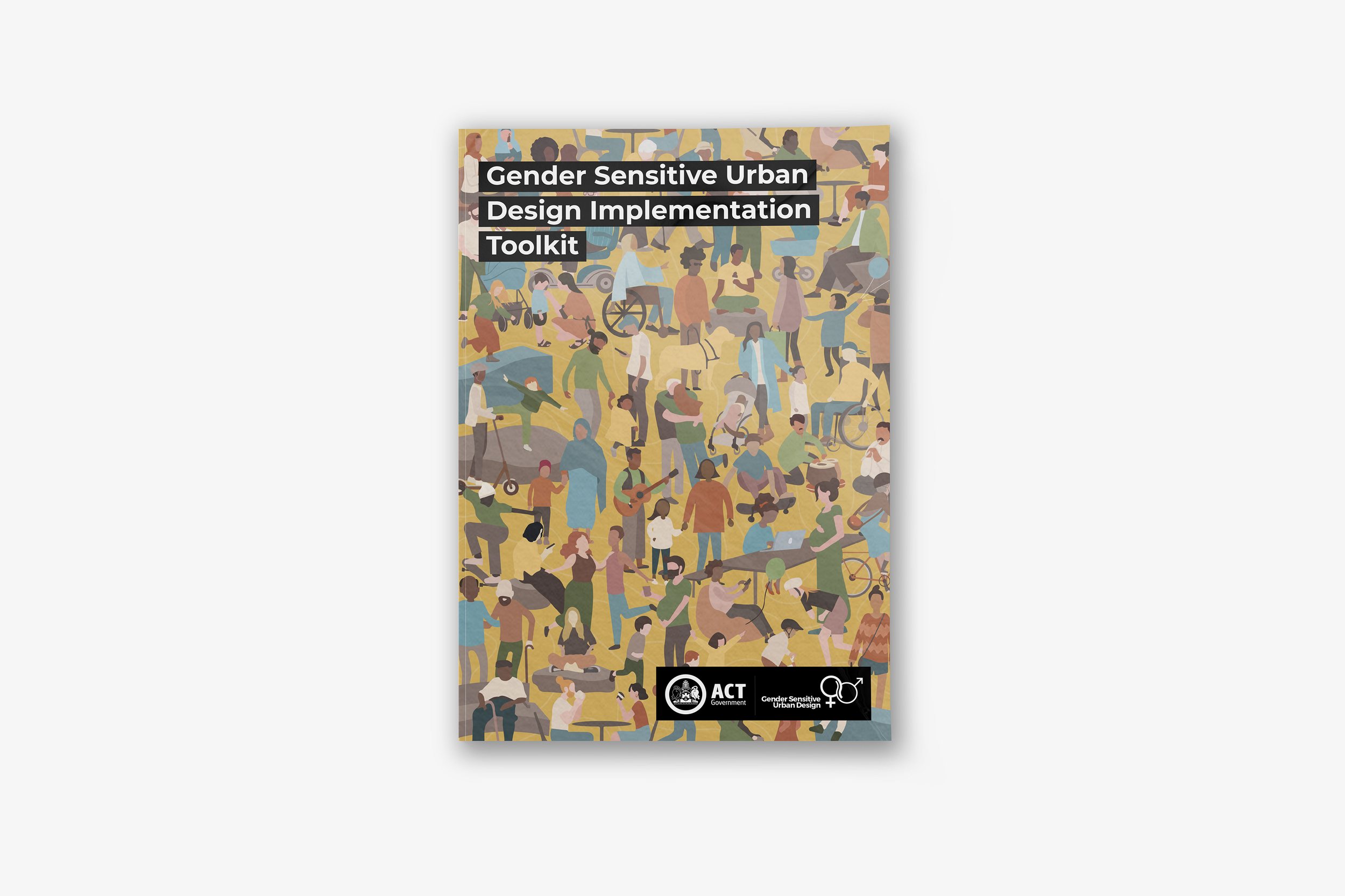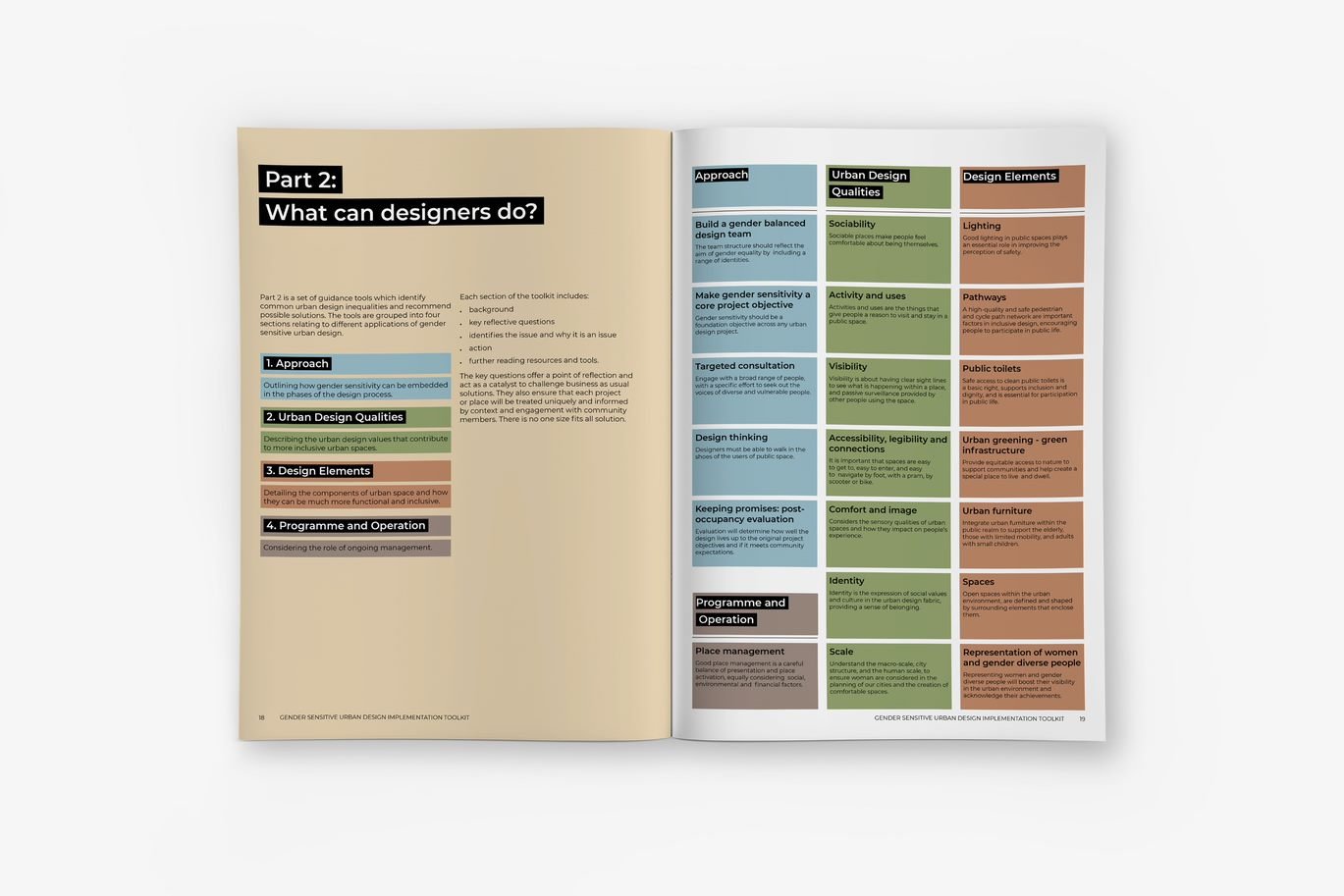A new Gender Sensitive Urban Design Guideline
A recent consultation with Canberra’s community to understand how different groups experience their public places has been undertaken by the ACT Government (Australia). The collaboration between the Oculus, PLACE Lab, Communication Link, and Inhabit Place (for the ACT Government) has resulted in a newly developed urban guideline.
Research from around the world has proven that cities are not equitable. The gender-neutral one-size fits all approach to city-making often provides better urban design experiences for heterosexual, non-disabled men than for women, girls, gender diverse and other vulnerable people.
The ACT Gender Sensitive Urban Design Guidelines, which consist of a Framework and Toolkit, are a significant step forward. They aim to set the highest benchmark for public spaces that are equitable, inclusive, accessible, and safe for everyone – in particular, women, girls, gender diverse and other vulnerable people.
What is gender sensitive urban design?
Gender sensitive urban design recognises that people experience public spaces differently based on gender.
Gender is just one of a multitude of interconnected dimensions that form an individual’s identity, and shape how a person is treated in society. Gender is a social and cultural concept that refers to the way a person lives and interacts with the world. It is about social and cultural differences in identity, expression and experience as a woman, man or non-binary person. Non-binary is an umbrella term describing gender identities that are not exclusively male or female.
Urban design is the integrated practice of shaping the built environment to create neighbourhoods, towns, and cities.
At a macro scale urban design defines the structure of our neighbourhoods and cities through the definition of land use mix, density, road connectivity, public open space, infrastructure, community amenity and environmental systems. At the micro or human scale, it defines the spatial features and urban design qualities.
The products of the urban design process, including streets, infrastructure, public spaces, and buildings, directly influence the way we live, work, socialise, move and connect to other people. Consequently, urban design professionals (including engineers, landscape architects, architects, planners and policy makers) and urban design practices, play a pivotal role in shaping the social structures and behaviours that define our community.4
Urban design principles and practices are generally considered to be gender neutral, not distinguishing between how either men or women experience and use public space.5
4 Page vi, World Bank Handbook for Gender-Inclusive Urban Planning and Design, 2020
5 Page 15, Gender Issue Guide: Urban Planning and Design, 2012, UN-Habitat
The project synthesises research and insights gathered through extensive literature review, consultation, and place audits, into recommendations for progressive and effective strategies tailored to the ACT context.
The Gender Sensitive Urban Design Framework is a strategic document that sets out principles for gender sensitive urban places. It describes key ideas generated from consultation, research, and analysis.
The Gender Sensitive Urban Design Implementation Toolkit is a practical guide that examines common gender-related public realm inequalities and challenges, offering recommendations to remedy and resolve them. The Toolkit is for use by practitioners and the community alike who are interested in the places in which they live.
Together they guide the delivery of best-practice urban design outcomes for the public realm through a gender lens. A gender-sensitive approach will assist not only urban design professionals; but also the ACT Government. It fosters an understanding of how different groups experience the public realm and how addressing inequalities in the urban environment creates a better place for all.
This article and images are provided with permission from Oculus - a cross-disciplinary design studio committed to connecting people with their environment and each other.


